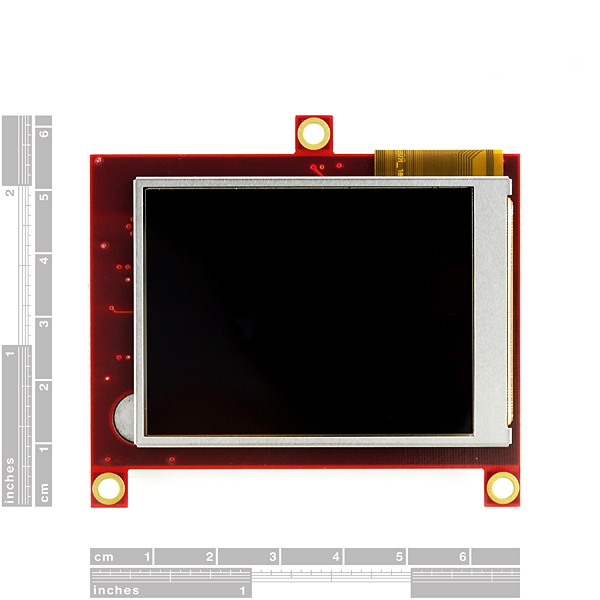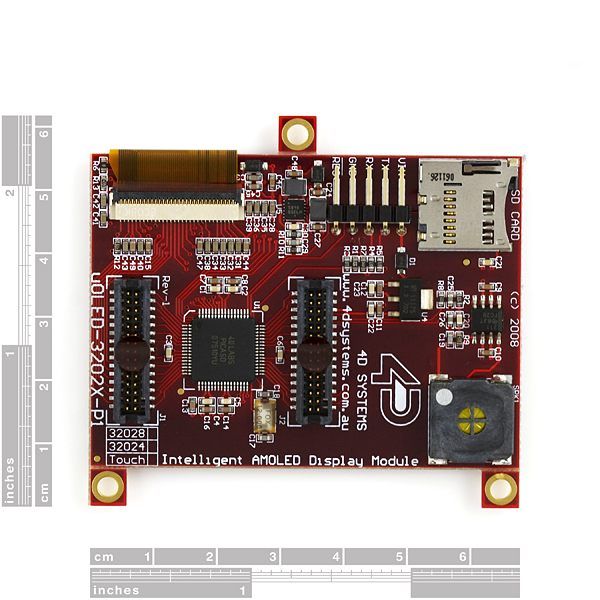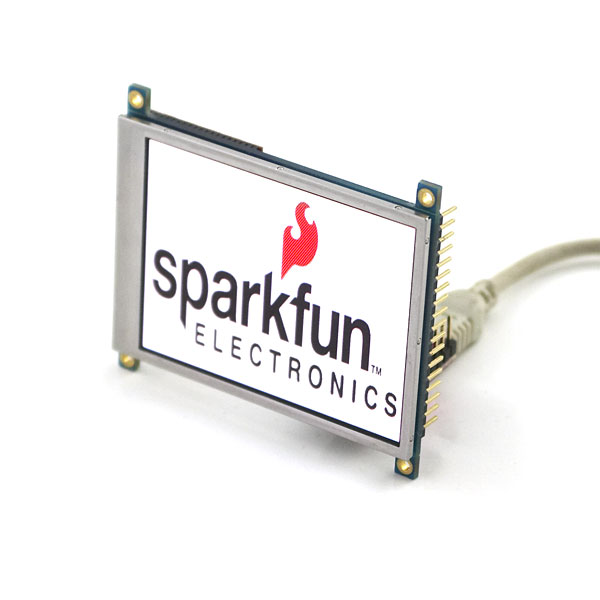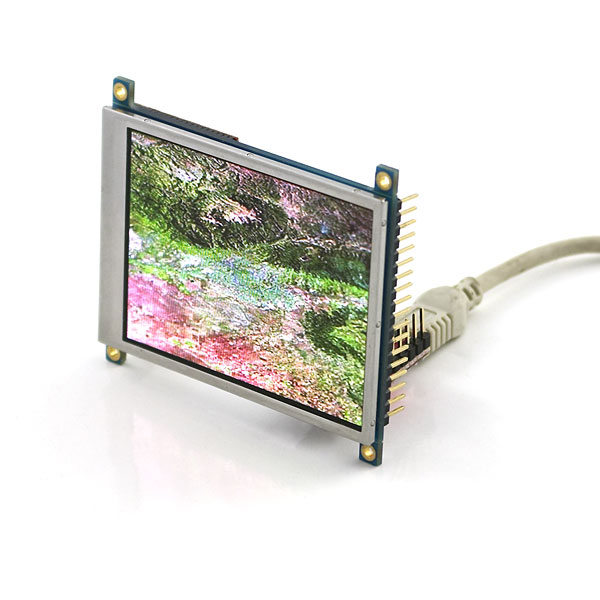Active Matrix OLED 2.4"
Replacement: None. There is no direct replacement at the moment. This product was discontinued. We are searching for a replacement but have not found one yet. This page is for reference only.
The µOLED-320XX-P1 series are compact & cost effective all in one display modules using the latest state of the art Active Matrix OLED (AMOLED) technology with an embedded PICASO graphics controller that delivers stand-alone functionality to any project. The easy to learn and use 4D Graphics Language (4DGL) with its vast built in library functions will allow rapid application development.
4DGL is a graphics oriented language, allowing the developer to write applications in a high level language (syntax similar to popular languages such as BASIC, C, Pascal, etc.) and run it directly on the PICASO processor embedded in the µOLED-320XX-P1 modules.
4DGL allows the user to take complete control of all available resources on that hardware platform such as the Serial Port, Graphics AMOLED Display, uSD-Card, I/O pins, etc. This eliminates the need for an external host controller/processor to drive the µOLED-320XX-P1 modules via serial commands. It provides the user complete control over the hardware module allowing them to quickly develop powerful applications.
Documents and Software:
* uOLED-32024-P1
- QVGA 240 x RGB x 320 pixel resolution with 256, 65K or 262K true to life colors enhanced AMOLED screen
- No smearing effects and minimized static image burn-in
- Near 180 degree viewing angle
- Easy 5 pin interface (VCC, TX, RX, GND, RESET)
- Voltage supply from 3.6V to 5.5V, current @ 60mA nominal when using a 5.0V supply source
- Powered by the fully integrated PICASO-MD3
- Onboard micro-SD (µSD) memory card adapter for storing of icons, images, animations, etc. (up to 2GB)
- Built in 4DGL graphics library functions such as: LINE, CIRCLE, RECTANGLE, USER BITMAP, BACKGROUND COLOUR, PUT PIXEL, IMAGE, VIDEO, etc.
- Audio amplifier with a tiny 8-Ohms speaker for sound generation and wave file playback.
- 67.7 x 59.54 x 11.0mm
Comments
Looking for answers to technical questions?
We welcome your comments and suggestions below. However, if you are looking for solutions to technical questions please see our Technical Assistance page.
Customer Reviews
No reviews yet.






The most disappointing thing about this module is that the 4DGL language doesn't support a float type. This makes anything but the most simple math functions impossible. Given how much this unit costs, I thought it would be able to do just about anything.
Also, it advertises TTL I/O channels, I2C, UART, etc, but the "expansion" connectors on the back are difficult to find.
The 4DGL code is also a bit strange sometimes. Some of the functions have poorly defined inputs and either bad or nonexistent sample code.
Overall it is a nice little display, and it does have a lot of convinient functions built in (like printing text to the screen, or displaying pictures/buttons). If all you want is a simple display with some basic processing power then this is perfect, but I'm finding that interfacing it with other components is becoming a bit of a pain.
Another note: Although it says it in the description, this only takes uSD cards 2GB or under. Anything over that is not supported and will not work.
We wrote a little article about these 4Dsystem's OLEDs and how to use them in your own project a while back:
http://metku.net/index.html?path=articles/4dsystems-oled-technology/index_eng
Has anyone gotten the audio functionality on this board to work? We are trying to drive the speaker at full volume, and are not getting anything out of it.